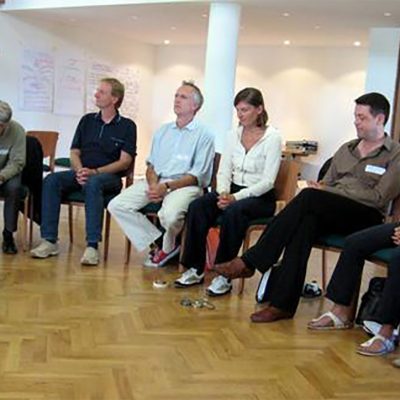
You are probably familiar with the ‘hundredth monkey’ story, which is a foundational story about critical mass thinking. In this story, the monkeys on an island had never washed their food, nor did it appear that it was genetically encoded for them to wash their food. Some of the monkey were taught to wash their food, and they in turn taught their children and slowly 99 monkeys learned to wash their food. The story then says that when the 100th monkey began to wash its food, very quickly all of the other monkeys on the island began to wash their food too. Not only all of the monkeys on the island, but this knowledge somehow transferred to groups of monkeys on other islands too even though these groups did not interact.
Another story, which also defies the explanations of conventional biology and physics, is one about rats in a laboratory. (Rat stories are dear to me, in that some of my training in psychology was done at a University well known for its rat psychology and hence I became quite intimate with the little teachers.)
In this instance, the rats in one place learned how to navigate a new maze. There were a lot of measurements taken including the length of time it took for learning and initial application. In similar subsequent experiments, other groups of rats, faced with the new maze, learned how to navigate it much more quickly. It appeared that the learning had somehow been transferred.
We think of this phenomenon as consensus reality.
Implications in Organizations
Consensus reality has a lot of implications for what happens in organizations. I smile when someone tells me that they are attempting to develop their organization as a ‘learning organization.’ With all due respect for Peter Senge’s work with the Learning Organization, all organizations are indeed learning organizations.
Organizations can be learning life nurturing, constructive habits and patterns that lead to sustainable high performance and the accompanying and often amazing tangible results. Organizations can also be learning bad habits and patterns that become deeply ingrained. The bad habits are also unfortunately very sustainable, dare I say ‘entrenched.’ The latter leads to chronic underperformance and the accompanying disappointing tangible results.
We know that it happens. We can accept stories such as the hundredth monkey story or the rats in a maze, and we might even accept that the same phenomenon is true for humans including humans in organizations of all types. Why does it happen? And if it is indeed true, what can we do about it to get the best possible outcomes for our organizations?
Consensus Reality in Organizations
No one knows the nature of reality, although various philosophers, theologians, and scientists have done their best to find explanations. Based on the current available knowledge of ‘belief creates reality,’ one hypothesis of reality is that we have what can be referred to as a consensus reality.
For example, in an organization, the reality for the people in the organization is created by a consensus of their beliefs of what the organization is and is not. This consensus reality is created even when it is not spoken about as such. It is created through the myths and stories that are told and lived out in the organization.
This consensus reality is not simply a fixed state, but is somehow is created by the consensus of all involved. As with the hundredth monkey, when enough people in an organization have heard a story and believe it to be true, it becomes a part of the consensus reality within the organization.
Working with Consensus Reality for Improved Organizational Culture
What is the consensus reality in your organization? Is it one that supports a life nurturing environment in which people are inspired in their work, highly productive, innovative and engaged? Or is it a consensus reality that is contributing to a more life depleting environment, in which people are engaged in long-standing beliefs or conflict that are weighing on engagement and productivity?
As consultants, it is important for us to help the people involved in an organization to understand the consensus reality that has been created in an organization. It is a key to helping them to adjust their organizational reality, call it organizational culture, to one that works for them and what they want to accomplish.
When you are aware of the consensus reality in an organization, you can better notice which myths, stories and beliefs about the organization are true. You can then also be aware of which myths, stories and beliefs about the organization are not true. From this place, we suggest using a model of looking at each of these myths, stories and beliefs to determine which are best to:
- Eliminate – removing what truly does not serve the organization
- Reduce – what can be focused on less or done less
- Increase – what do you want more of within your consensus reality
- Create – what needs to be created in order to achieve a consensus reality that best supports the organization
From this clear picture, you can then intentionally develop a consensus reality that is based on the best myths, stories and beliefs for the organization to develop as a life-nurturing climate for high productivity, innovation and engagement.
Photo Credit: Erkin Sahin | FreeImages.com











Leave a Reply
You must be logged in to post a comment.